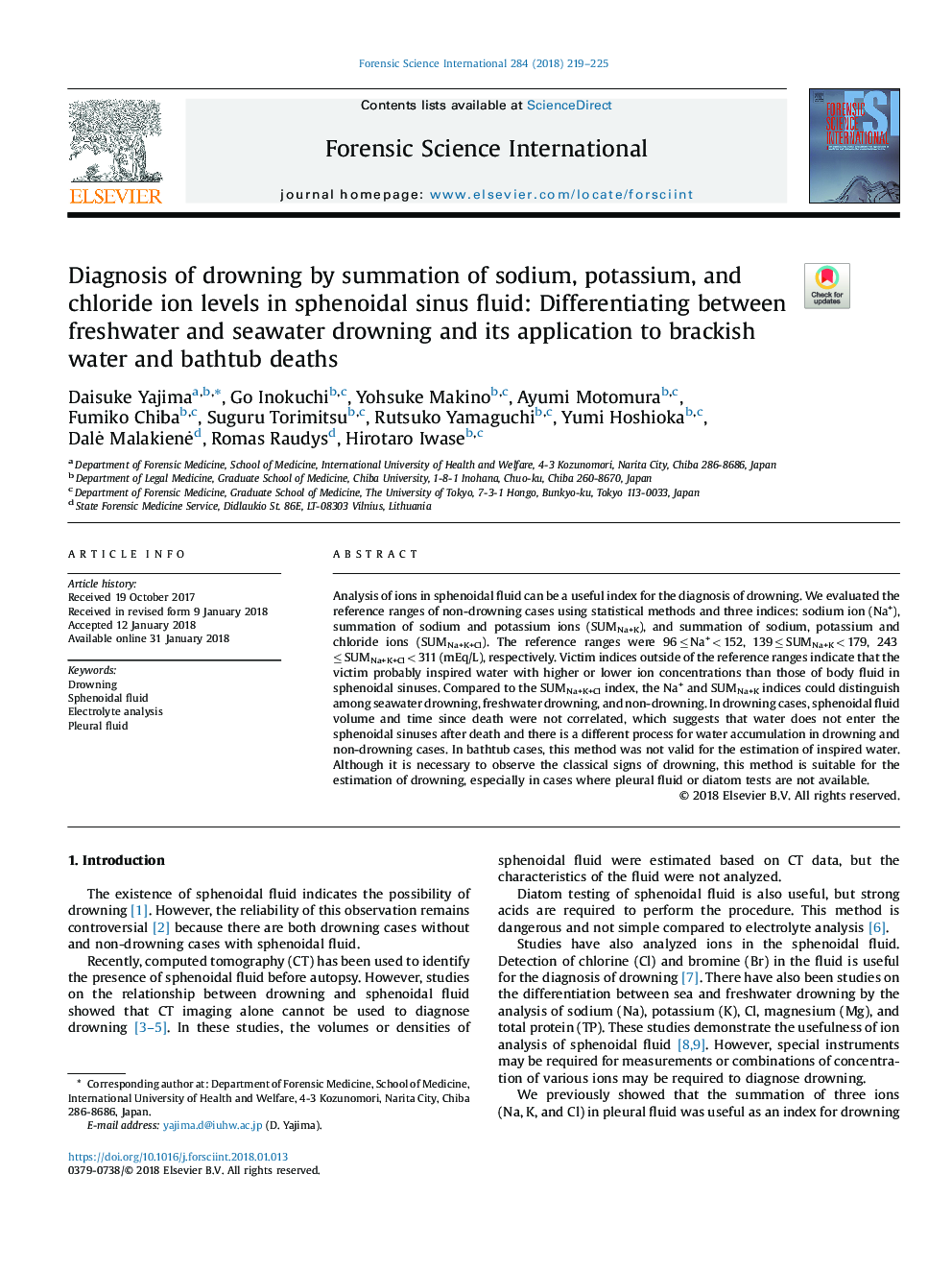| Article ID | Journal | Published Year | Pages | File Type |
|---|---|---|---|---|
| 6551286 | Forensic Science International | 2018 | 7 Pages |
Abstract
Analysis of ions in sphenoidal fluid can be a useful index for the diagnosis of drowning. We evaluated the reference ranges of non-drowning cases using statistical methods and three indices: sodium ion (Na+), summation of sodium and potassium ions (SUMNa+K), and summation of sodium, potassium and chloride ions (SUMNa+K+Cl). The reference ranges were 96 â¤Â Na+ < 152, 139 â¤Â SUMNa+K < 179, 243 â¤Â SUMNa+K+Cl < 311 (mEq/L), respectively. Victim indices outside of the reference ranges indicate that the victim probably inspired water with higher or lower ion concentrations than those of body fluid in sphenoidal sinuses. Compared to the SUMNa+K+Cl index, the Na+ and SUMNa+K indices could distinguish among seawater drowning, freshwater drowning, and non-drowning. In drowning cases, sphenoidal fluid volume and time since death were not correlated, which suggests that water does not enter the sphenoidal sinuses after death and there is a different process for water accumulation in drowning and non-drowning cases. In bathtub cases, this method was not valid for the estimation of inspired water. Although it is necessary to observe the classical signs of drowning, this method is suitable for the estimation of drowning, especially in cases where pleural fluid or diatom tests are not available.
Keywords
Related Topics
Physical Sciences and Engineering
Chemistry
Analytical Chemistry
Authors
Daisuke Yajima, Go Inokuchi, Yohsuke Makino, Ayumi Motomura, Fumiko Chiba, Suguru Torimitsu, Rutsuko Yamaguchi, Yumi Hoshioka, DalÄ MalakienÄ, Romas Raudys, Hirotaro Iwase,
